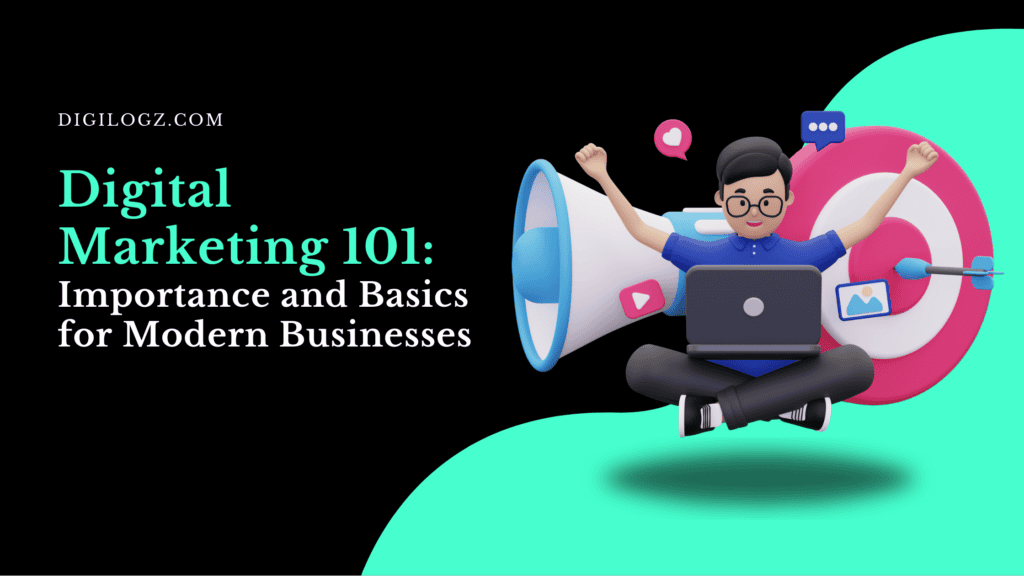In today’s digital age, a robust digital marketing strategy is essential for businesses to thrive and stay ahead of the competition. With the ever-evolving landscape of online platforms and consumer behavior, it’s crucial to develop a comprehensive plan that effectively promotes your brand, engages your target audience, and drives measurable results. In this guide, we’ll explore the key steps to crafting a successful digital marketing strategy that elevates your business to new heights.
Understanding Your Audience
The foundation of any successful digital marketing strategy lies in understanding your target audience. Take the time to research and analyze your audience demographics, preferences, and behavior. Utilize tools like Google Analytics, social media insights, and customer surveys to gather valuable data. By understanding who your audience is and what they’re looking for, you can tailor your marketing efforts to resonate with them on a deeper level.
- Demographic Analysis: Conduct research to understand the demographics of your target audience, including age, gender, location, and interests.
- Behavioral Insights: Use tools like Google Analytics and social media analytics to gather insights into your audience’s behavior, preferences, and online activities.
- Persona Development: Create buyer personas based on your research to better understand the needs, pain points, and motivations of your target audience segments.
Understanding Your Audience
| Analysis Type | Description |
|---|---|
| Demographic Analysis | Researching and understanding the demographics of your target audience, including age, gender, location, and interests. |
| Behavioral Insights | Utilizing tools like Google Analytics and social media analytics to gather insights into your audience’s behavior, preferences, and online activities. |
| Persona Development | Creating buyer personas based on research to better understand the needs, pain points, and motivations of your target audience segments. |
Setting Clear Objectives and Goals
Before diving into execution, it’s crucial to define clear objectives and goals for your digital marketing strategy. Whether it’s increasing brand awareness, driving website traffic, generating leads, or boosting sales, each objective should be specific, measurable, achievable, relevant, and time-bound (SMART). By setting concrete goals, you can track your progress and adjust your strategy accordingly to ensure success.
- SMART Goals: Define specific, measurable, achievable, relevant, and time-bound (SMART) objectives for your digital marketing strategy.
- Goal Alignment: Ensure that your goals align with your overall business objectives and contribute to the growth and success of your organization.
- Key Performance Indicators (KPIs): Identify key metrics to track and measure the success of your digital marketing efforts, such as website traffic, conversion rates, and return on investment (ROI).
Setting Clear Objectives and Goals
| Objective Type | Description |
|---|---|
| SMART Goals | Defining specific, measurable, achievable, relevant, and time-bound objectives for your digital marketing strategy. |
| Goal Alignment | Ensuring that your goals align with your overall business objectives and contribute to the growth and success of your organization. |
| KPIs | Identifying key metrics to track and measure the success of your digital marketing efforts, such as website traffic, conversion rates, and return on investment. |
Conducting a Comprehensive Website Audit
Your website serves as the cornerstone of your online presence, making it essential to conduct a comprehensive website audit to identify areas for improvement. Evaluate factors such as website design, user experience, site speed, mobile responsiveness, and search engine optimization (SEO) performance. Address any issues or deficiencies to ensure your website effectively represents your brand and provides a seamless user experience.
- Technical Analysis: Evaluate the technical aspects of your website, including site speed, mobile responsiveness, and crawlability.
- Content Assessment: Review your website content to ensure it’s relevant, engaging, and optimized for search engines and user experience.
- User Experience (UX) Evaluation: Assess the usability and navigation of your website to ensure a seamless and intuitive browsing experience for visitors.
Conducting a Comprehensive Website Audit
| Audit Aspect | Description |
|---|---|
| Technical Analysis | Evaluating the technical aspects of your website, including site speed, mobile responsiveness, and crawlability. |
| Content Assessment | Reviewing your website content to ensure it’s relevant, engaging, and optimized for search engines and user experience. |
| UX Evaluation | Assessing the usability and navigation of your website to ensure a seamless and intuitive browsing experience for visitors. |
Implementing Search Engine Optimization (SEO)
A solid SEO strategy is vital for improving your website’s visibility and ranking on search engine results pages (SERPs). Conduct keyword research to identify relevant keywords and phrases related to your business. Optimize your website content, meta tags, images, and URLs for these keywords to enhance your organic search presence. Additionally, focus on building quality backlinks from reputable websites to boost your site’s authority and credibility in the eyes of search engines.
- Keyword Research: Identify relevant keywords and phrases related to your business, products, and services using tools like Google Keyword Planner and SEMrush.
- On-Page Optimization: Optimize your website content, meta tags, headings, and images for target keywords to improve your search engine rankings.
- Off-Page SEO: Build quality backlinks from reputable websites to enhance your website’s authority and credibility in the eyes of search engines.
Implementing Search Engine Optimization (SEO)
| SEO Aspect | Description |
|---|---|
| Keyword Research | Identifying relevant keywords and phrases related to your business, products, and services using tools like Google Keyword Planner and SEMrush. |
| On-Page Optimization | Optimizing your website content, meta tags, headings, and images for target keywords to improve your search engine rankings. |
| Off-Page SEO | Building quality backlinks from reputable websites to enhance your website’s authority and credibility in the eyes of search engines. |
Creating Compelling Content
Content is king in the digital marketing realm, playing a crucial role in attracting, engaging, and converting your target audience. Develop a content marketing strategy that delivers valuable, relevant, and engaging content across various channels, including your website, blog, social media, email newsletters, and more. From informative blog posts and captivating videos to interactive infographics and engaging social media posts, create content that resonates with your audience and drives meaningful interactions.
- Content Strategy: Develop a content marketing strategy that aligns with your business goals and addresses the needs and interests of your target audience.
- Content Creation: Produce high-quality and engaging content in various formats, including blog posts, articles, videos, infographics, and podcasts.
- Content Distribution: Promote your content across different channels, including your website, blog, social media platforms, email newsletters, and third-party websites.
Leveraging Social Media Marketing
With billions of active users worldwide, social media platforms offer unparalleled opportunities to connect with your audience, build brand awareness, and drive engagement. Identify the most relevant social media channels for your business and develop a tailored social media marketing strategy. Create compelling content, engage with your audience, and leverage paid advertising options to expand your reach and drive results.
- Platform Selection: Identify the most relevant social media platforms for your business based on your target audience demographics and preferences.
- Content Planning: Plan and schedule your social media content to ensure consistency and relevance across platforms.
- Community Engagement: Actively engage with your audience by responding to comments, messages, and mentions to foster relationships and build brand loyalty.
Implementing Email Marketing Campaigns
Email marketing remains one of the most effective channels for nurturing leads, retaining customers, and driving conversions. Develop email marketing campaigns that deliver personalized and targeted content to your subscribers. Segment your email list based on factors like demographics, interests, and purchase history to ensure relevant messaging. Incorporate compelling subject lines, visually appealing designs, and clear calls-to-action (CTAs) to encourage engagement and drive conversions.
- List Building: Grow your email subscriber list by offering valuable incentives such as exclusive content, discounts, or freebies.
- Segmentation and Personalization: Segment your email list based on factors like demographics, purchase history, and engagement levels to deliver personalized content and offers.
- Automation: Utilize email marketing automation tools to streamline your campaign workflows, send targeted messages at the right time, and nurture leads through the sales funnel.
Monitoring and Analyzing Performance
Continuous monitoring and analysis are essential for optimizing your digital marketing strategy and maximizing your return on investment (ROI). Utilize analytics tools like Google Analytics, social media insights, and email marketing platforms to track key performance indicators (KPIs) such as website traffic, engagement metrics, conversion rates, and ROI. Identify areas of improvement, experiment with different strategies, and make data-driven decisions to refine your approach and achieve your goals.
- Data Collection: Use analytics tools to track and collect data on key performance metrics such as website traffic, engagement, conversion rates, and ROI.
- Performance Analysis: Analyze your data to identify trends, patterns, and areas for improvement in your digital marketing strategy.
- Continuous Optimization: Use insights from your performance analysis to refine and optimize your digital marketing tactics and campaigns for better results.
Staying Agile and Adaptable
In the ever-changing landscape of digital marketing, agility and adaptability are paramount. Stay informed about industry trends, technological advancements, and shifts in consumer behavior. Be prepared to adjust your strategy in real-time to seize opportunities and overcome challenges. By staying agile and adaptable, you can stay ahead of the curve and maintain a competitive edge in the digital marketplace.
- Market Monitoring: Stay informed about industry trends, competitor activities, and changes in consumer behavior to anticipate shifts and opportunities in the market.
- Experimentation: Be open to trying new tactics, strategies, and technologies to stay ahead of the curve and adapt to evolving market conditions.
- Iterative Approach: Embrace an iterative approach to digital marketing, where you test, learn, and iterate on your strategies and tactics based on real-time feedback and results.
Conclusion
Building a successful digital marketing strategy requires careful planning, execution, and optimization. By understanding your audience, setting clear objectives, optimizing your website, creating compelling content, leveraging social media and email marketing, monitoring performance, and staying agile and adaptable, you can develop a strategy that drives meaningful results for your business. Remember, success in digital marketing is not just about reaching your destination but also about continuously evolving and improving along the way.



